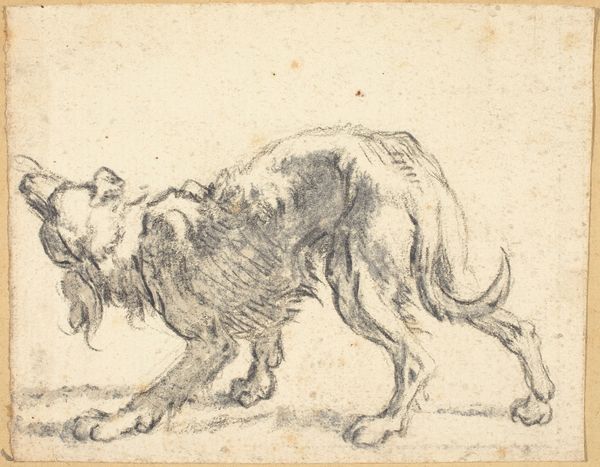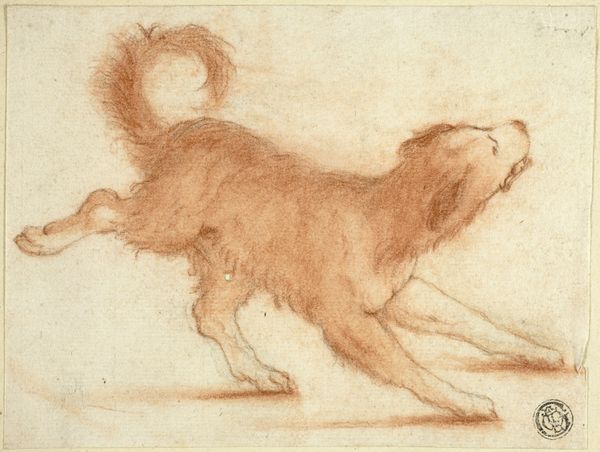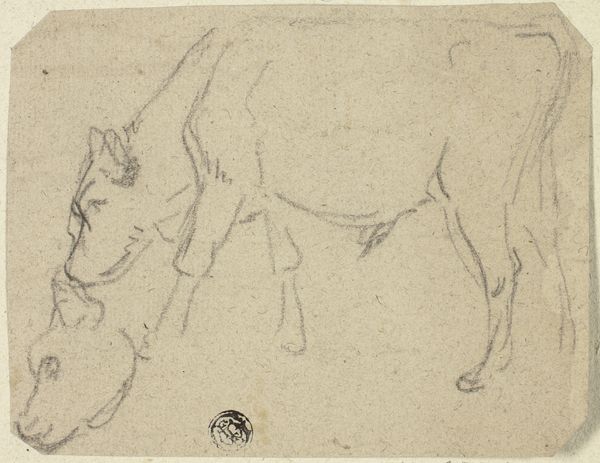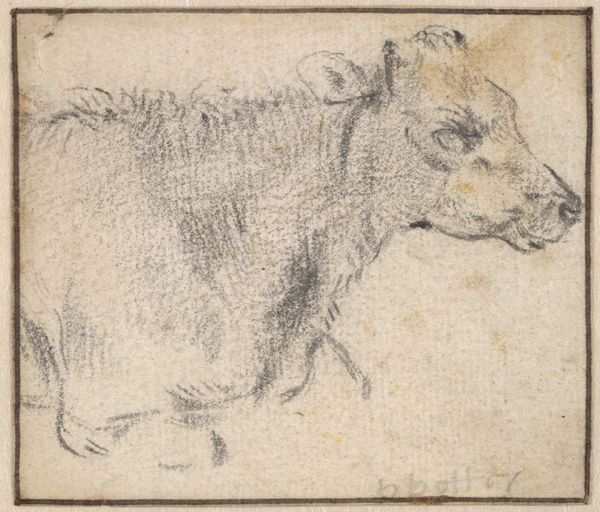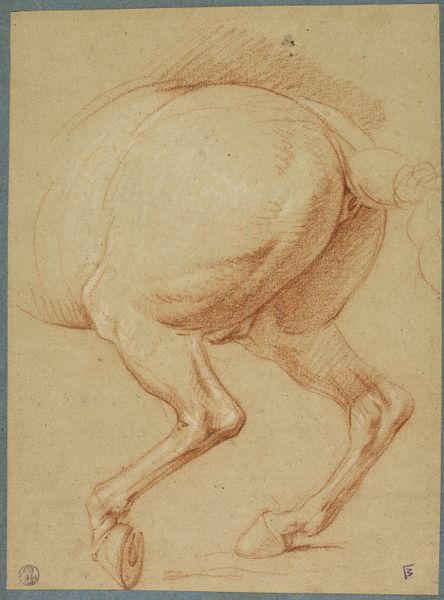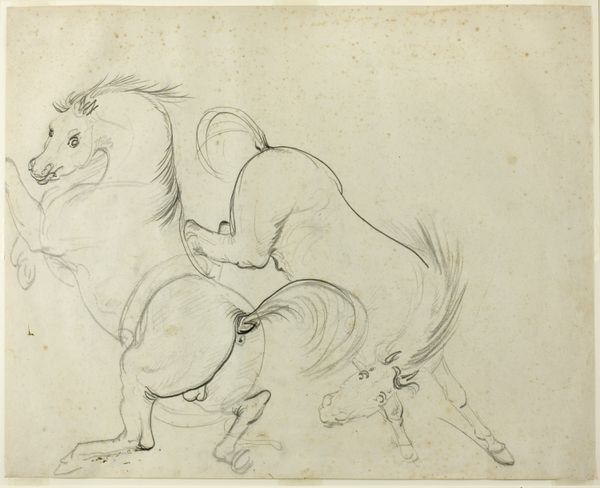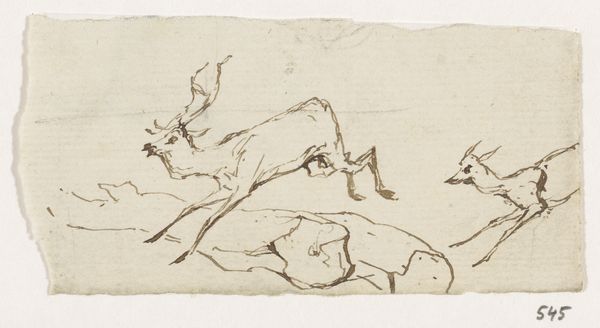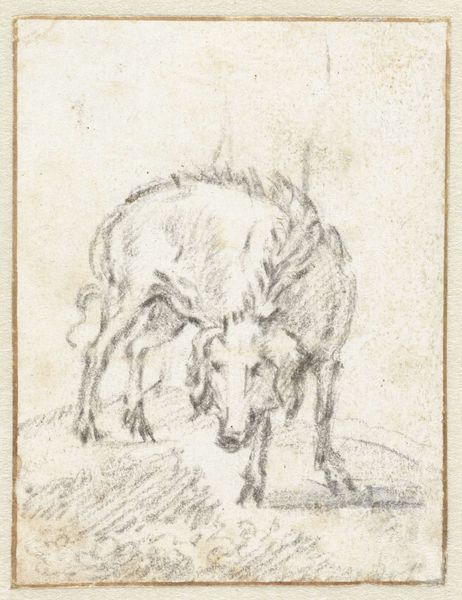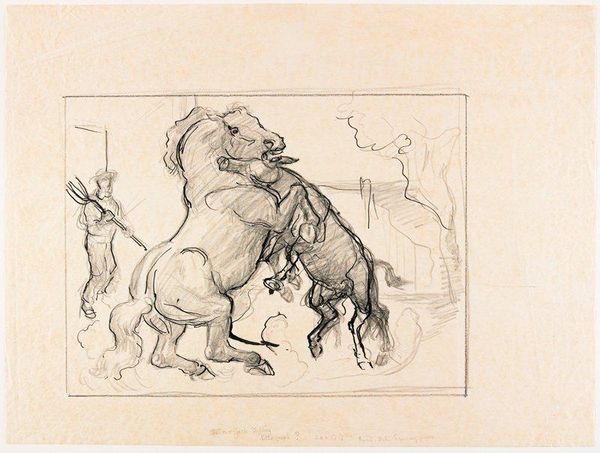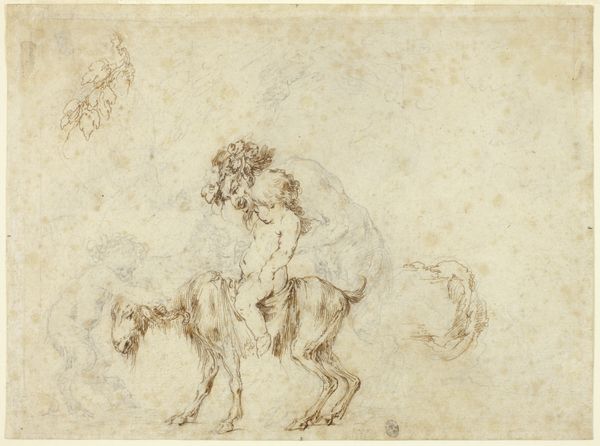
drawing, pencil
#
drawing
#
animal
#
landscape
#
figuration
#
11_renaissance
#
pencil
Dimensions: 4 1/4 x 5 3/16 in. (10.8 x 13.18 cm)
Copyright: Public Domain
Francesco Vanni made this drawing, "Barking Dog", using black chalk, sometime between the late 16th and early 17th centuries. Vanni was working in Siena during a period of artistic transition as the Renaissance ideals began to give way to the more dramatic sensibilities of the Baroque. This sketch offers insight into the artistic process of the time, where studies of figures and animals were integral to larger compositions. But I find myself wondering what kind of statement Vanni was trying to make? Is the animal in the artwork just an element in a larger composition? Or could it be a symbol, a representation of loyalty, or perhaps a commentary on the social hierarchies of his time? Regardless of its intended purpose, "Barking Dog" captures the spirit of artistic exploration of the era. It remains an engaging piece that invites us to reflect on our relationships with the natural world.
Comments
minneapolisinstituteofart almost 2 years ago
⋮
While drawing connoisseurship can seem dangerously subjective to the uninitiated, quite often consensus is found among various experts. When this drawing entered the collection, it was miscatalogued as a study by the Dutch artist Cornelis Saftleven. Three drawings connoisseurs independently suggested this fragmentary, quick sketch of a barking dog was executed by a Sienese artist around 1600. It was the scholar John Marciari who identified the artist as Francesco Vanni, recognizing the dog from Vanni's impressive mural Saint Catherine Exorcising a Demon of 1593-96, in the church of San Domenico in Siena, where its appears prominently in the central foreground of the painting. The dog is barking madly at the woman possessed by demons, who flails on a parapet above him to the right. He is shown from the identical viewpoint, and in the same pose as the drawing, with his muzzle raised, teeth showing, tail upright, front legs crouched, and front paws not visible. In the final painting, the dog's left hindleg is obscured by the forearm of a figure, and the exacting description of the dog's private parts, not suprisingly, is omitted.
Join the conversation
Join millions of artists and users on Artera today and experience the ultimate creative platform.
